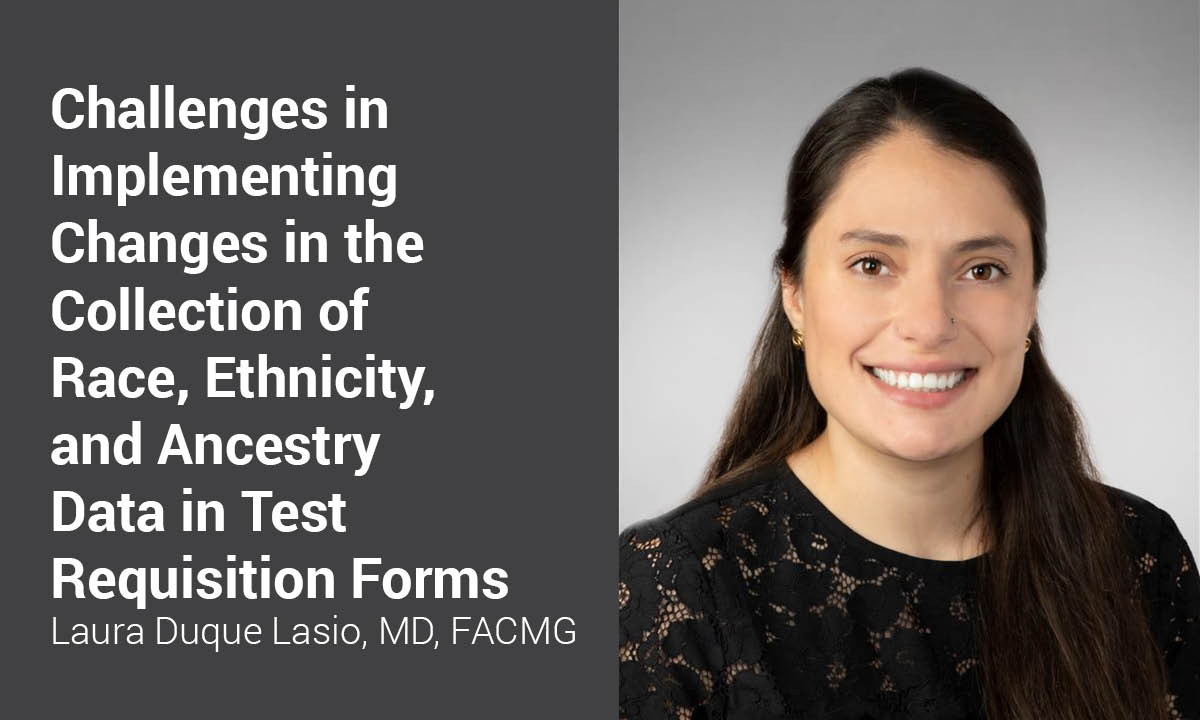
How are patient data about race, ethnicity, or ancestry (REA) that are collected on laboratory test order forms being used? Are these data relevant in clinical decision-making?
Across society, there is a growing and changing understanding of how REA is experienced, interpreted, and baked into both cultural and institutional perspectives and practices.
“This shift is raising many important questions about racism in science and medicine,” said Laura Duque Lasio, MD, FACMG, clinical biochemical genetics fellow at ARUP Laboratories. “We are just beginning to grapple with those consequences.”
In laboratory medicine—and particularly in genomics—the shifting understanding has prompted many clinical laboratories to reexamine their practices for the collection and use of REA data and consider making changes in their approaches to testing and test interpretation.
“What we know is that race-based classifications reflect social definitions that are not rooted in biologic or genetic realities,” she said. “So why do we, as genetic testing laboratories, insist on collecting this information?”
Duque Lasio said she doesn’t believe that anyone in medicine is advocating that REA data never be collected. It is both important and relevant when testing for diseases known to have a higher prevalence of occurrence in individuals of certain ancestry, she said. The questions lie in which elements of REA data should be collected (all categories, some, or none?) and how they are collected.
Duque Lasio shares her insights into the issue in an online video presentation entitled, “Challenges in Implementing Changes in the Collection of Race, Ethnicity, and Ancestry Data in Test Requisition Forms,” which will be the subject of a virtual discussion on Friday, May 20, 2022.
The presentation and discussion are part of an ongoing series from the Ethical, Legal and Social Implications (ESLI) Research Program, which fosters cross-disciplinary study of the consequences of mapping and sequencing the human genome.
Taking action to make systemwide change in the laboratory comes with considerable challenges, Duque Lasio said, such as addressing the inherent problems of data collection, reaching laboratory consensus, and regulatory roadblocks.
The following are among the key points noted in the presentation:
- Categories for race and ethnicity that are commonly used in biomedical research need to be examined because they are not biologically derived but are based on social definitions that have no clinical value.
- Self-reporting of race, ethnicity, and ancestry by patients can be influenced by the offered category options on forms and may also reflect patients’ perceptions, beliefs, and social experiences.
- There is a lack of consensus across stakeholder groups on the need to consider or adopt changes to test ordering forms.
- Laboratory oversight agencies, such as the College of American Pathologists, require REA data to be collected and considered in test interpretation in some specific instances.
- Making one change may require other changes across the lab, such as in areas like document control, client and staff education, and information technology.
The bottom line: Laboratories need guidance so that if the practice of collecting REA information continues, it is done in respectful and inclusive ways.
“Updated professional evidence-based guidelines and recommendations would promote changes in how we collect and use this information,” Duque Lasio said.
Jennifer Dobner, jennifer.dobner@aruplab.com
















